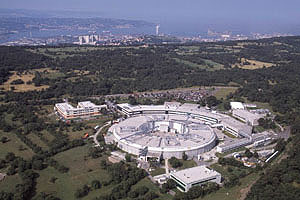|
Over the past 30 years synchrotron radiation has become a most powerful research tool applied in many different fields of science: physics, chemistry and biology, material sciences, geophysics and medical diagnostics. This rapid progress was driven by the development of new increasingly brilliant synchrotron radiation sources.
|
|

ELETTRA Laboratory
|
Advances in the development of accelerators, breakthroughs in the ability to produce and to control low emittance electron beams, and the successful operation of very precise undulators have paved the way for the construction of Free Electron Lasers (FELs). The advent of FEL sources in the VUV and X-ray region will offer opportunities to the atomic and molecular physics community to exploit with the available techniques and methodologies problems not approachable with present sources, and the challenge to address new problems where the development and application of new methods are needed. Due to the high brightness and time structure of the FEL source, pump/probe techniques will be the most suited tools to investigate ionisation and dissociation processes, to follow specific chemical reactions in the time domain, or the evolution of nanoplasma created by the interaction of the light pulse with solids.
Thus it is extremely timely:
- to exploit the property of the existing sources combining them with lasers in order to develop the needed know-how and to select classes of phenomena for further investigation with the new sources;
- to compare the potentialities and characteristics of accelerator-based pump/probe experiments with those of lab based experiments (XUV lasers produced by HHG)
The goal of the workshop is to bring together atomic and molecular scientists who have performed or are designing pump/probe experiments at the existing synchrotron radiation facilities; or have proposed and will perform pump/probe experiments at the recently built TESLA Facility at Hamburg and the future sources like Fermi@Elettra; or are working with laboratory sources like lasers.
The discussion will centre on the scientific problems that can be tackled effectively, the most suitable methodological approaches and the possibility to establish joint-ventures to build advanced instrumentation to be shared among the groups and facilities.
|

